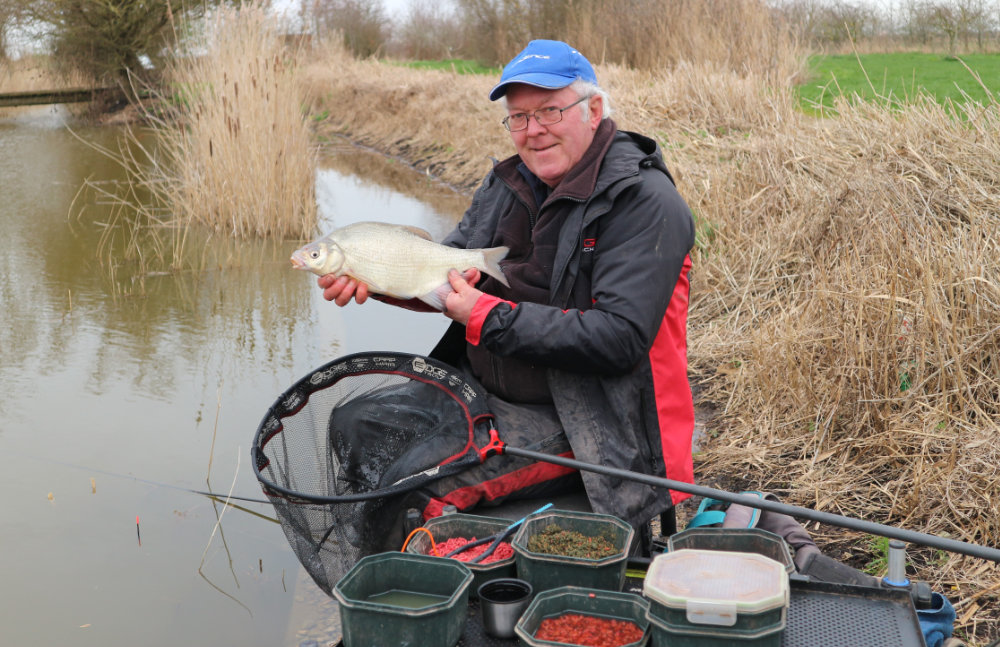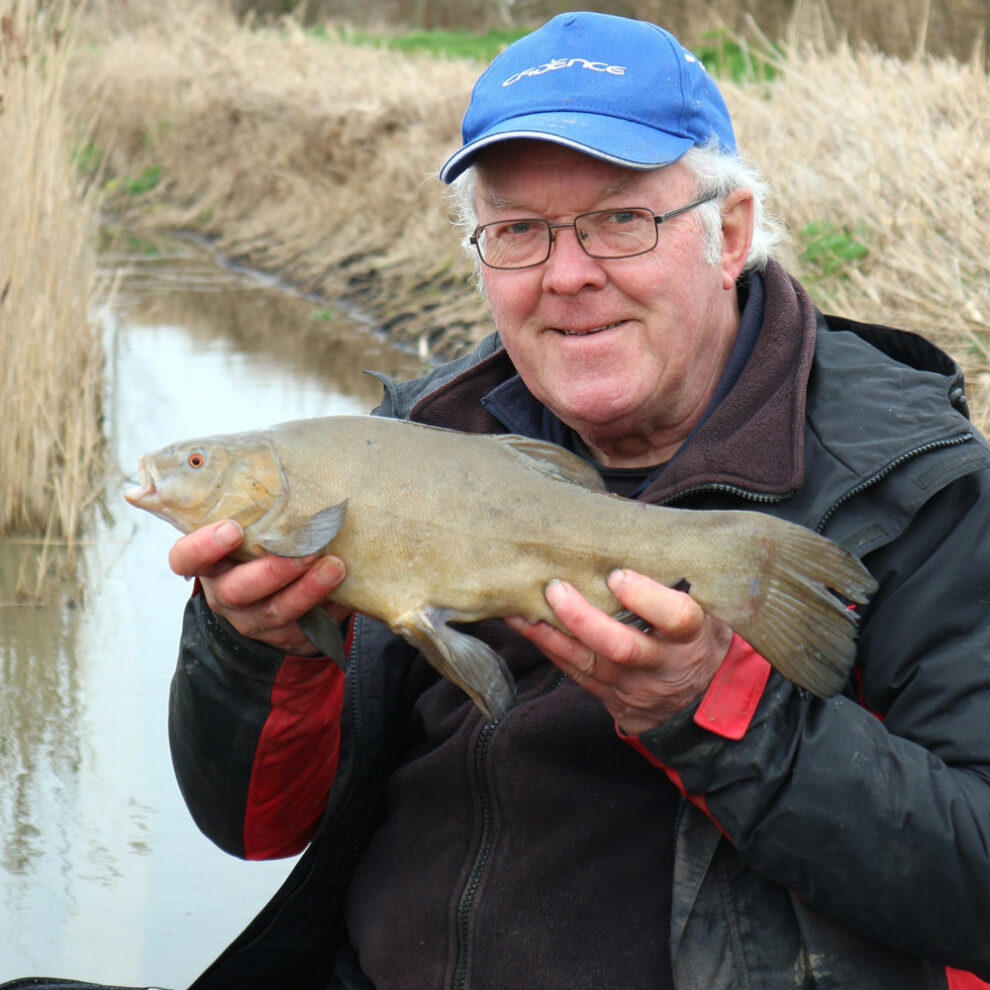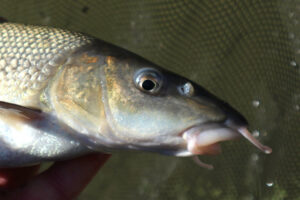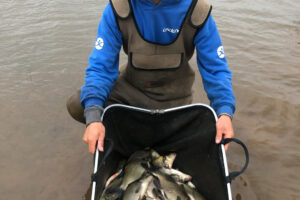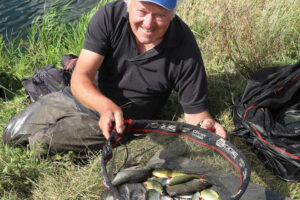Monsoon Season
It’s been one of the wettest winters I can remember and by far the muddiest. The Old River Nene around where I live fished exceptionally well, despite all the extra coloured water surging through it. But having watched winter league anglers struggling to set up on the treacherously steep and slippery banks, a less demanding venue seemed like a good plan. I was also tiring of spending hours cleaning up my kit and car after so many mucky and damp experiences. For my next outing, I decided to revisit the Carp Lake at Manea Fisheries. No need for a barrow, platform or foot plate there. It was just a case of parking up and carrying my gear a few yards, picking one of the well-spaced pegs on the manicured grassy banks. After taking this more leisurely option, I was still of course hoping for a busy time, just like my previous visits.
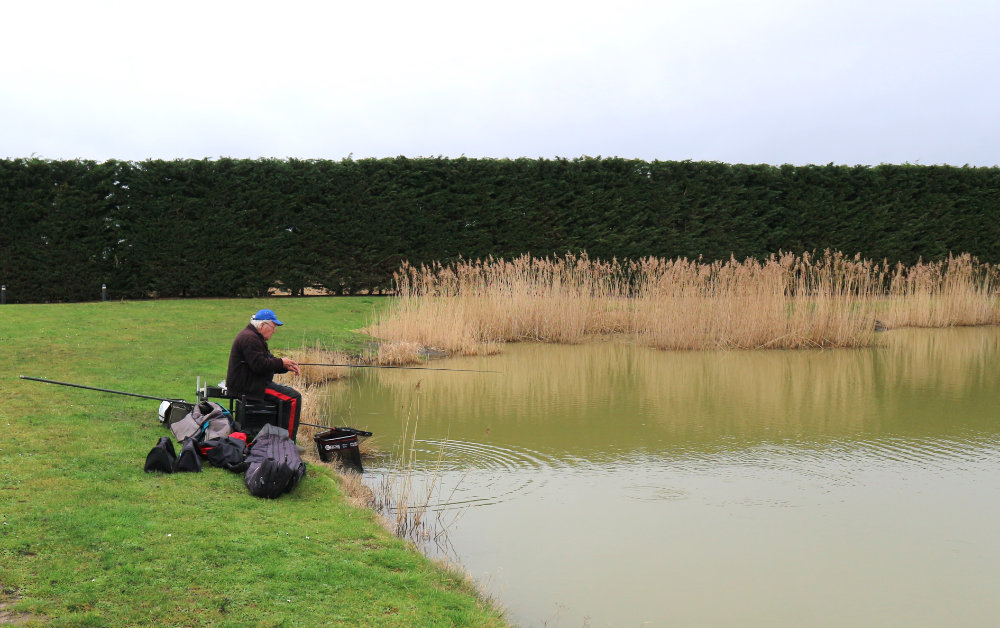
Another Way
I had already enjoyed a couple of hectic winter carp bagging sessions on this lake, followed by a mega haul of small rudd when I discovered they were resident in large numbers. I managed an amazing 800 in five hours when I had a go for them, which left me wondering if I could better that score. It was a bit like bleak bashing, where match anglers on places like the River Wye in Herefordshire amass even larger hauls of tiny fish. Some might think this approach tedious, but I find it challenging to maintain such a high catch rate, requiring lots of concentration. I decided on another rudd challenge, setting up two light pole tackles, one shallow and one half depth. These were attached to elasticated top kits in case carp butted in. The prolific small fish responded instantly to regular small balls of soft groundbait, combined with loose fed pinkies.
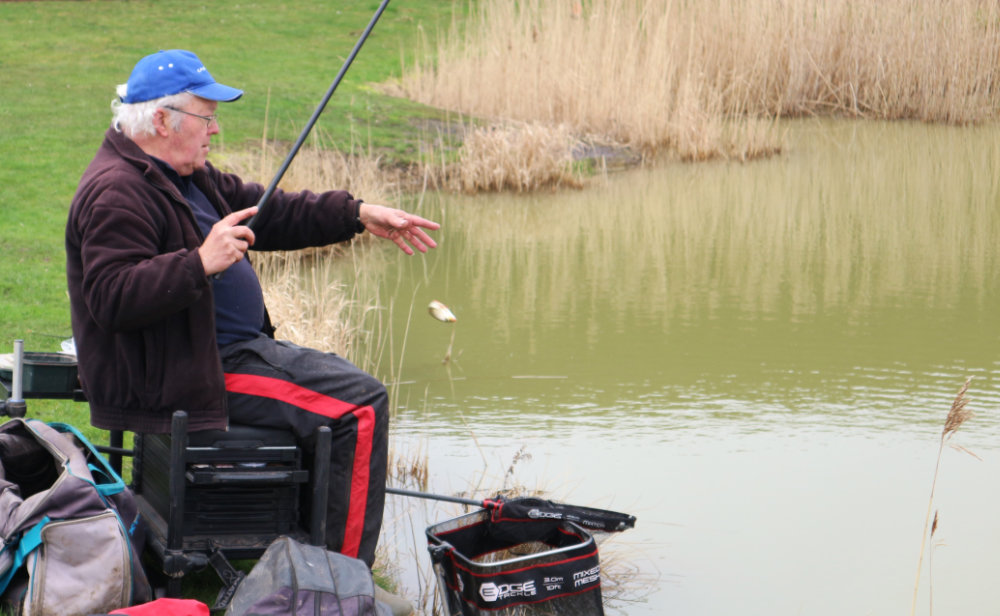
Keeping Track
I don’t bother with fish counters, clocking up numbers in my head when targeting small stuff. Match fishing has taught me to do this, so I can work out what my potential weight is likely to be by the end of sessions. Setting myself a five-hour time limit, the rudd responded thick and fast. I was beginning to think it might be possible to break my previous tally by a big margin, especially as the carp were leaving me alone most of the time. I only saw odd ones lazily drifting through my feed area, managing to avoid hooking any. Rudd were swirling on the surface for my bait, eagerly grabbing a single red maggot on my shallowest set rig. It was only during the last hour when my catch rate began to falter. There was still lots of activity in my swim, but the inhabitants were becoming more difficult to catch. I managed to beat my previous score by just four fish.
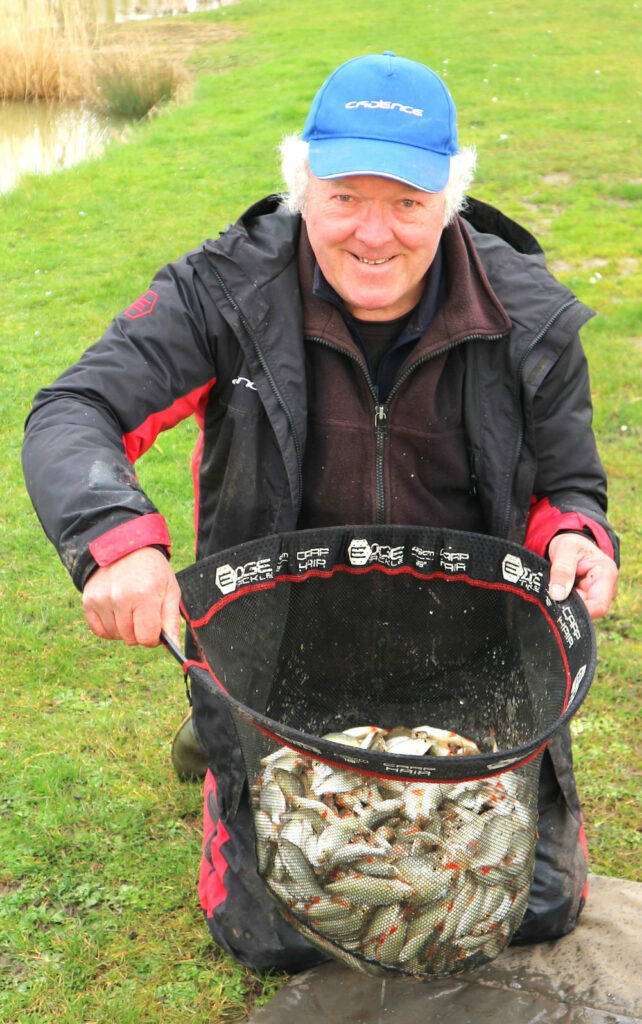
Skimmer Time
When winter weather makes sport unpredictable, it’s nice to find a venue that produces plenty of bites when it’s cold. Kingfisher Lake at Townsend Fishery, on the outskirts of Wisbech, is one such place. They run regular silver fish matches when the carp are less active. Main methods that score are the pole and waggler, but to try and avoid the carp, feeding needs to be careful. Maggots and pellets are best for the silvers, using groundbait very sparingly. Casters also work in areas where there are roach and hybrids, sometimes finding bonus tench as well. I had the low winter sun in my face on the first couple of matches and couldn’t see a waggler, managing low double figures and then a blow out on pole tactics. I badly needed to be on another part of the lake where I could operate properly. When that happened, it was a different world.
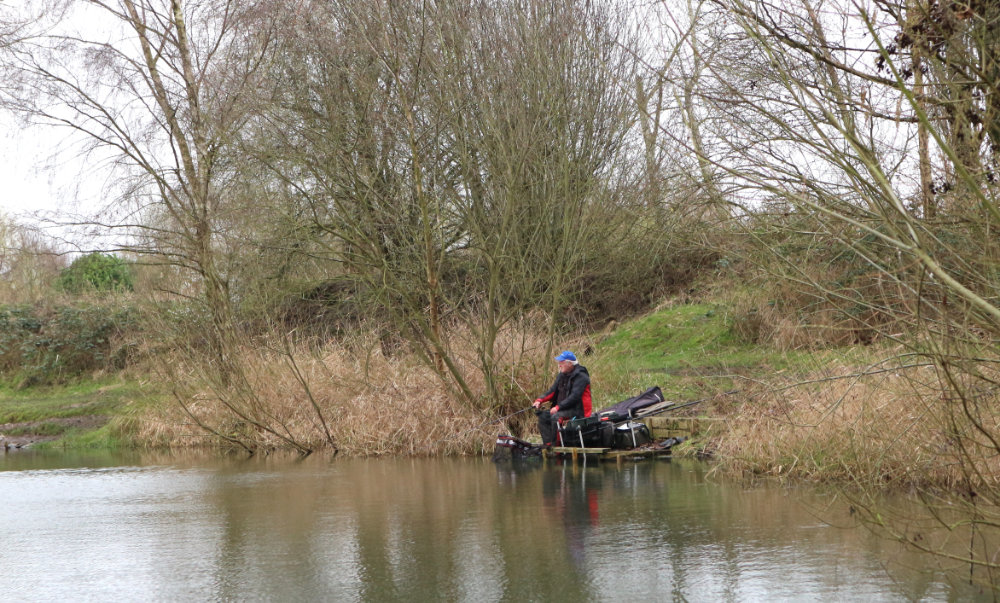
Top Rod
Finally drawing a glare-free peg where I could use a waggler, for the next match I decided to switch between running line and the pole, in an effort to string more skimmers together. This tactic worked fine for a couple of hours, before hungry F1s moved in on both feed lines. It then became a case of switching about more regularly, trying to put in just enough free stuff to keep the skimmers interested. I also caught odd roach, rudd and hybrids, but there was no pattern to that. For the waggler, I was using the Cadence CR10 12ft Match #1, which is a lovely rod for light line and a peacock insert float. It casts crisply but is also very forgiving when playing fish; an absolute joy to use. I combined this with a prototype Cadence reel and Edge Sinking Mono, which completed a superb set up. The reel doesn’t have a name yet.
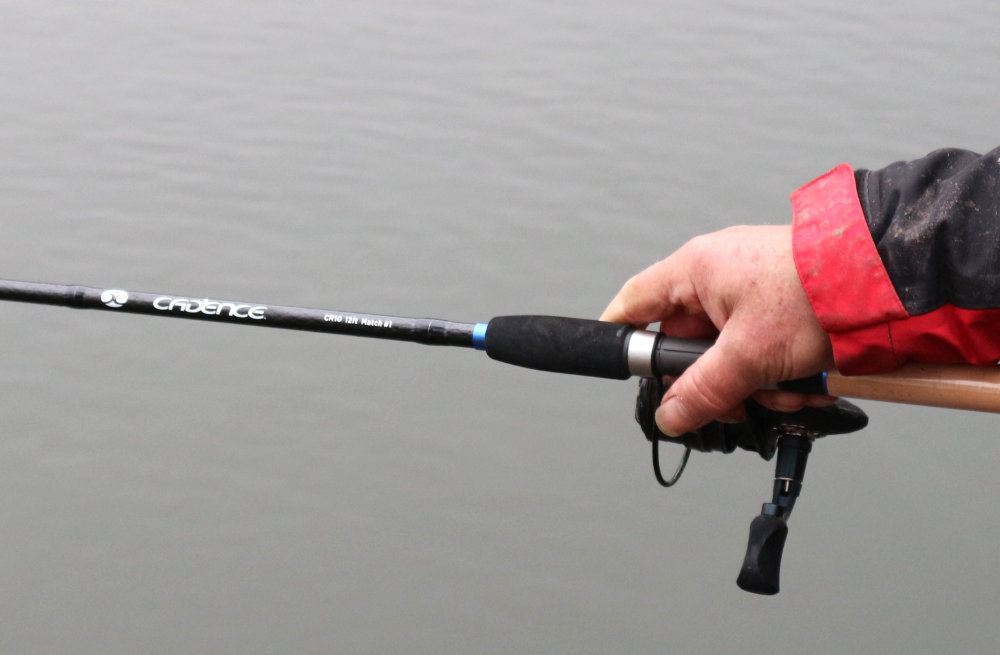
Getting There
I caught a few better sized skimmers on the waggler, which was tricky work thanks to branches overhead, requiring underarm and sideways casting. It took a while to get that unusual technique running smoothly. Switching to my pole feed line produced smaller skimmers in short flurries, but was nothing special. Soft expander hook baits worked best close in, but were not robust enough for the awkward way I was having to cast with my rod and reel set up. For that I found a single red maggot best, although I did catch a couple of bonus bigger silvers on firmer hooker pellets, but they took too long to pull interest. Because the waggler was working best, I kept that area ticking over by feeding a mixture or maggots and small 3mm pellets with a catapult. Plenty of lively F1s were put back and I eventually framed with this nice catch.
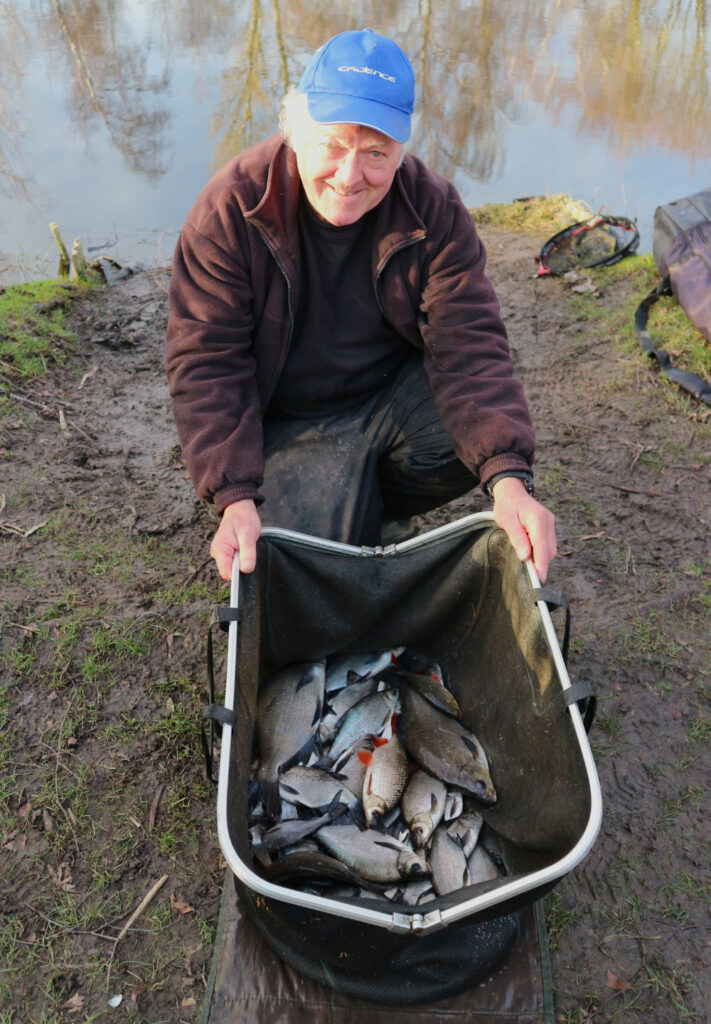
Trying Things
Not completely happy with my skimmer approach, I went back for a pleasure session on Kingfisher. I only set up a waggler, wanting to enjoy using the Cadence CR10 12ft Match rod once again, along with the brilliant new prototype reel that combines so well with it. This time I planned to use casters and pellets, to see if they would sort out better-quality fish. I had pre-wetted some 2mm Sonu Baits Pro Expander Pellets, which swell up and don’t require pumping to make them sink. Most importantly, they catapult out the same distance as casters or maggots. I also had some ready-banded 4mm hard pellets, which stay on better for running line work, along with various other commercially made hook options. Kicking off with a banded hard pellet, much to my surprise, I connected with a decent skimmer straight away.
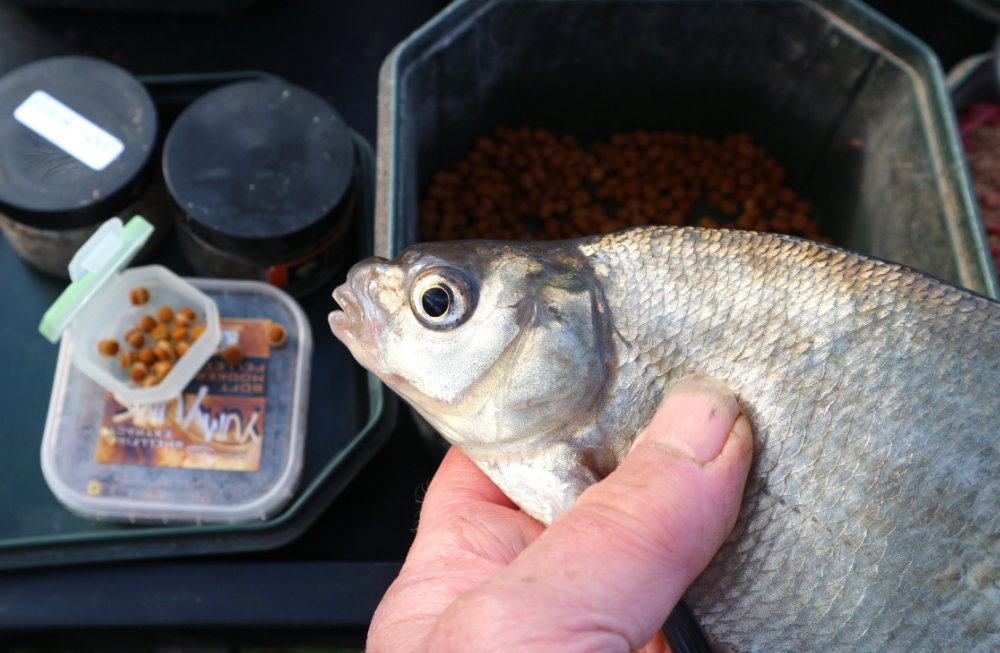
Avoidance Tactics
It’s tempting to put a good bed of feed down when targeting skimmers, but on a venue with so many F1s and even bigger carp, it’s a dangerous game to play. Instead, I tried to work the swim up carefully, alternatively feeding pellets and casters in small amounts. For a while this worked well, building a good weight with a string of skimmers, hybrids and small roach, but packs of hungry F1s began to muscle in. To try and avoid them, I tried casting around the edges of my feed area, which resulted in picking off a few bonus skimmers. Another trick was to feed slightly more heavily but less often, putting up with the carp until they went and the silvers returned. It became a proper game of chess. The funniest moment was when the owner came round to see how I was doing. I thought I was bullying another carp in, when up popped a surprise tench!
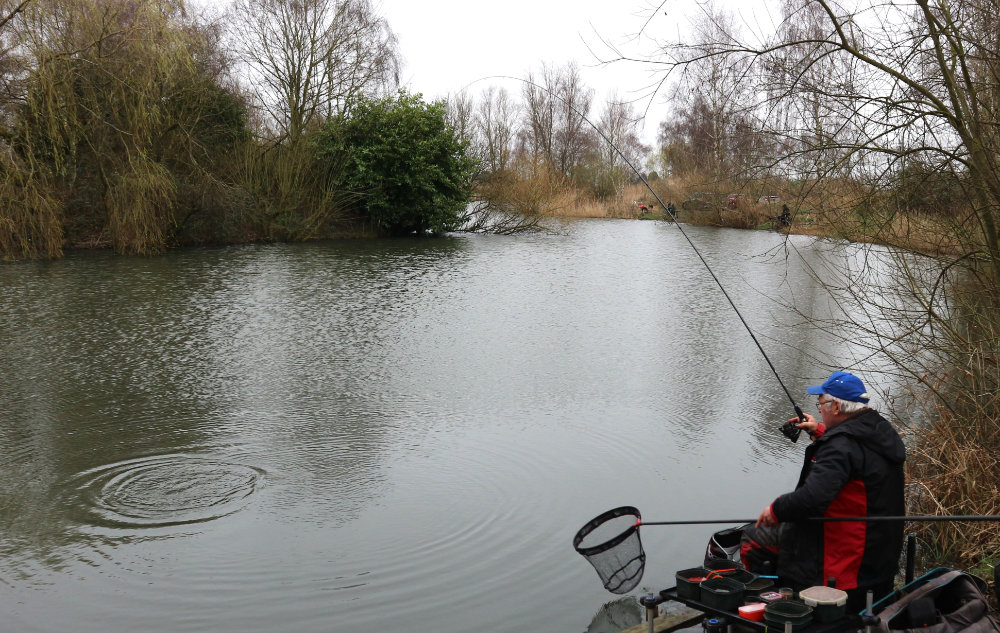
Problem Solving
I tried switching to feeding just hard 4mm pellets, which resulted in a skimmer bream straight away. Catapulting half a dozen baits around my float every cast didn’t seem a lot, but the canny F1s soon picked up on the sound. I had a crazy spell when they went mad, not even managing to get my hook bait to the bottom. The F1s got bigger too, some pushing towards the 4lb mark. It was great fun on light tackle but not what I was looking for. Bearing in mind the skimmers respond well to tiny cupped in amounts of soft groundbait and micros on pole tackle, I tried catapulting golf ball sized helpings of that mix over my waggler. But out in open water it attracted lots of tiny roach and rudd. Going back to a mixture of casters and loose small pellets was the best way, although intruders like this thick-set beauty still wouldn’t leave me completely alone.
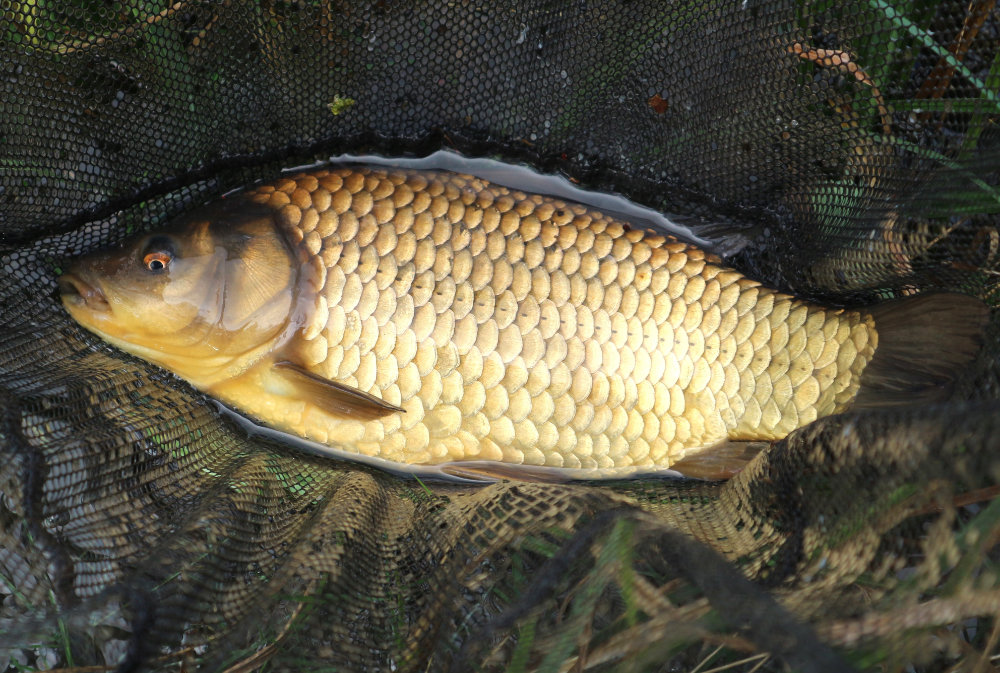
Getting There
Being pestered by carp taught me a lot regarding the way feeding needs to be to try and avoid them. It was interesting the way the sound of slightly larger pellets hitting the water was like a dinner bell, pulling lively F1s from all over the place. Smaller 3mm pellets didn’t have the same effect, making less noise and attracting skimmers better. Sonubaits Pro 2mm Expanders swell up to 3mm and catapult far enough out, as do the Dynamite 3mm Krill size, which can be fed dry or slightly damp. Casters helped with the silver fish too, while loose feeding maggots pulled in more carp. Expanders were tricky to use with waggler tackle, being a bit too soft for sweeping low casts when underneath tree branches, where banded hard pellets worked better. However, 4mm expanders were good on the pole, particularly for the bigger skimmers.
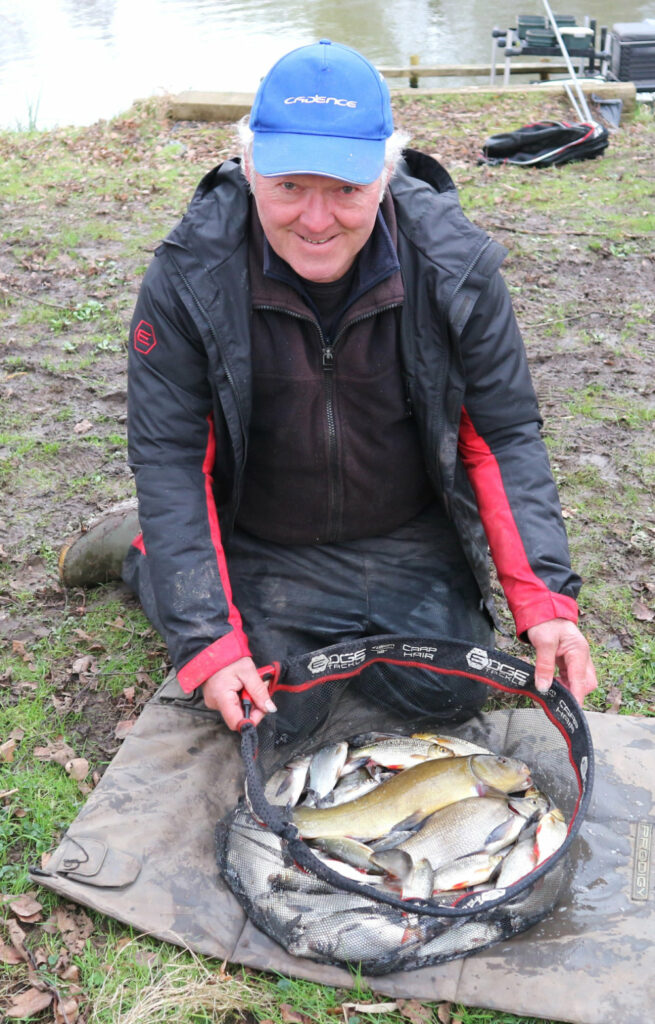
Pit Stop
A local angler told me that the post office at Manea sold day and season tickets for an interesting gravel pit close by. It was worth a look for just a fiver. Starting in open water, casting an empty Edge Cage Feeder around, revealed 6ft of water with just odd clumps of dead weed. Finding a clear spot at 40 metres, I tried hard for several hours, only getting one missed drop back indication. Cormorants were everywhere on the open area, thankfully not having any luck catching anything. I decided to retreat to a canal-like backwater, which the big black predators were avoiding. Flicking a small waggler out, small roach responded to loose fed maggots, along with tiny perch. A couple of net roach followed, then a proper rod bender tuned out to be this bonus tench. Word has it this venue is renowned for them and that they go to a big size.
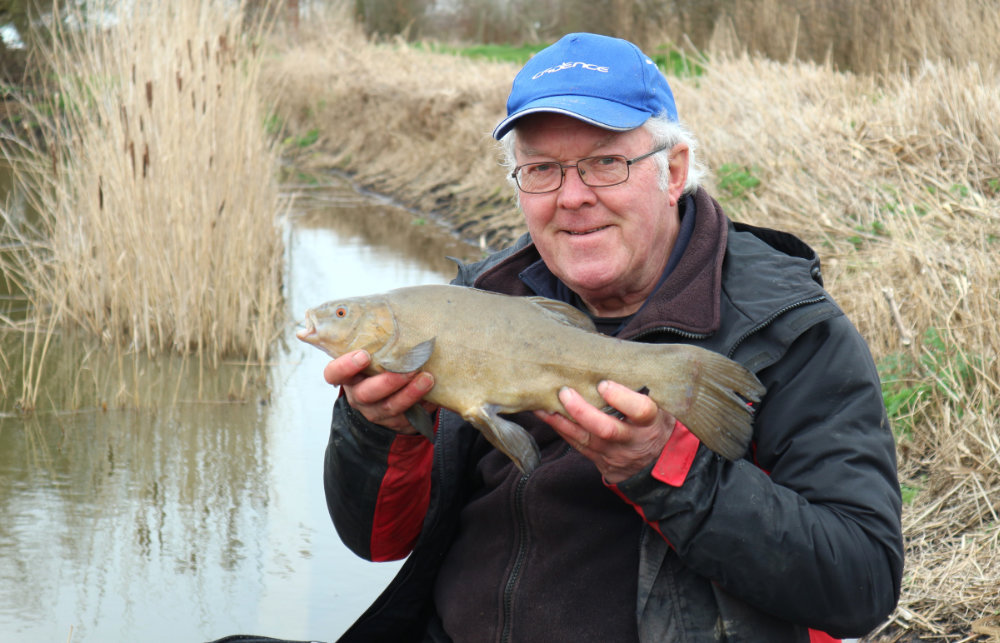
Finding More
I finished off with this big skimmer and apart from the cormorants, liked the place. Manea Pit has been nicely landscaped with lottery money. It will be worth more attention when it gets a bit warmer. The venue is better known for carp than anything else, but a couple of speccy lads told me they often encounter good-sized tench in the summer. There are rumours of big bream too, but they tend to be more elusive. As for other silver fish, it looks like predators have cleared out the open water, so the extensive backwaters will be key to finding any. My first winter in the fens was crammed with fish and excellent sport over a wide span of venues. The drains were great, provided you got to know where the fish were shoaling up. But the biggest surprise was the wealth of stillwaters, with so many more to explore. That journey is just beginning.
